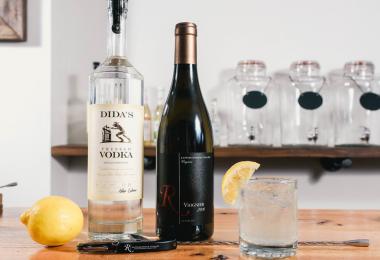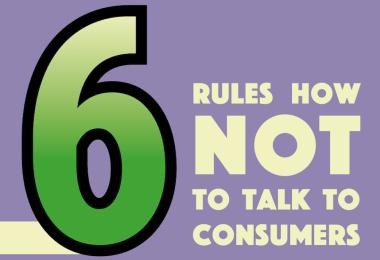Blockbuster French rosé brand Mirabeau has decided to go it alone. On 27 May, two months into the Covid-19 pandemic, sales director Udo Koschinski launched a direct sales channel in the German market — Mirabeau’s inaugural attempt to reach consumers without the support of a retailer or distributor.
“We realised that the restaurant sector was unlikely to fully recover any time soon,” says Koschinski. “We knew we had to act quickly to recuperate turnover.” He said that not only did the direct-to-consumer (DTC) sales channel offer the best solution, but he also feels it’s the future. “We can thrive without a distributor in this market.” He adds that if the venture is successful, the model may be rolled out to other nations. “It’s quite likely.”
Yet as recently as January 2020, the DTC model was considered a controversial topic in many European wine regions, particularly Bordeaux. The pandemic has forced people to reconsider.
The European approach
Not surprisingly, European wineries mostly support a long-established system that hands a virtual monopoly — excluding on-trade sales — to wholesalers and retailers, because the costs of DTC in Europe, especially logistics and shipping, are relatively high. While such barriers are also prevalent in nations like the USA, however, the value of DTC transactions there have been rising since 2015. This growth has not just been driven by tourism and cellar door sales, as most US states now allow some level of direct shipping, allowing wineries and drinkers to bypass the three-tier system.
“Charles Krug actually started the DTC model back in 1861 — they had the first wine club in the industry. But in the middle of the 20th century, the DTC model became less popular and fell somewhat under the radar for the winery,” explains Judd Wallenbrock, president and CEO of C. Mondavi & Family. “However, since 2012, our DTC sales have grown steadily each year.”
Now, as Covid-19 continues to change attitudes to communication, leisure and commerce, European wineries are reconsidering. A number of wineries have recently announced that they are launching a DTC portal. This group includes Champagne houses Philipponnat, A R Lenoble and Palmer & Co, Spanish producer Alvaro Palacios and Portuguese brands Taboadella and Herdade Aldeia de Cima.
“Before Covid-19 became reality, three percent of our sales were purchased directly by consumers who visited us at the estate. Of course, tourism is off the cards for the foreseeable future, so we’ve decided to launch an online portal in 2020,” says Christian Holthausen, AR Lenoble’s export director. Other sparkling producers are also feeling the pain from a loss of tourism income — Cava giants Codorníu and Henkell Freixenet used to receive the highest number of wine visitors in Spain. However, both companies launched e-commerce platforms before the pandemic struck.
“In October 2017, we launched e-commerce under the Codorníu domain,” explains communications manager María Fernández. “Other companies will surely look to capitalise on this new reality by building a solid DTC offering.”
Sandra Janetzki, senior vice-president global at Henkell Freixenet, says that “besides our own Henkell Freixenet channels, we have started selling our products online in the Chinese market in cooperation with online retailers such as Tmall, JD or Pinduoduo. We strongly believe that DTC sales will continue to grow and will gain a bigger share of our total sales volumes.” She adds that the increased consumer interest in DTC shopping “gives us the opportunity to develop digitally native brands and to target consumers more precisely”.
Henkell Freixenet and Codorníu are fortunate to have a network of digital channels that complements their partnerships with retailers, both digital and physical. However, labels such as Mirabeau are pursuing a more radical approach, fearful of a permanent loss of on-trade revenue.
“Our model could become the new normal for smaller wineries,” says Mirabeau’s Udo Koschinski
“We’ve hired a logistics firm to maintain a warehouse of our wines in Germany, but we exclusively manage the marketing and retailing via our online portal and social media platforms. So their role is minimal and our margin is healthier.” He says the logistics firm handles the deliveries; “However, they are not playing the role of a distributor — the firm is not responsible for reaching out to clients and consumers. This way, you bypass the cumbersome logistics and regulations involved if you ship direct from France. It’s the intelligent way to manage DTC sales.”
At first glance, Mirabeau’s approach has few drawbacks. Producers keep a larger share of the profits and maintain control over the sales process. In addition, the wines aren’t sharing scant retail space with a surfeit of competitors. As ever, though, first impressions can be deceptive. “We’ve become a strong advocate of the DTC model, but wineries need to realise that this is a whole other world with a formidable set of new challenges,” says António Maçanita, owner of several Portuguese wine brands.
“Suddenly, it’s your job to provide round-the-clock customer care. ‘Where’s my order? My consignment is late, I didn’t order 50 bottles’.” He says that the logistics of shipping direct within Portugal is a steep learning curve — selling by the bottle instead of by the pallet is a different way to do business. “Nevertheless, I think that the distribution networks will change forever and DTC will become more important.”
Carmén Giné, global marketing director for Spanish firm Zamora, underlines the point that a badly managed DTC portal can actually damage a brand’s reputation. “Never underestimate the logistics of engaging in direct sales,” she says. “You need to deliver on time and without any mistakes. Clients can tolerate delays, but they need to be kept informed. Then there’s the packaging costs. If a delivery fails, customer support is paramount. It’s not just a question of the client’s satisfaction, but the overall perception of your brand.”
Zamora started selling direct to Spanish consumers in 2014. This is standard practice, as the vast majority of wineries adopting the direct-to-consumer model are only shipping within their domestic market. The logistics involved in shipping a wine consignment direct from Portugal to an Irish consumer, for example, are expensive and cumbersome. Producers are often required to use a tax representative to handle the customs and excise regulations, while nations such as Ireland actually forbid companies to send wines direct to consumers unless they are first inspected by customs officials.
This is why a pan-European, or indeed global, DTC network is unlikely. It is far more cost-effective to continue to hire online retailers to sell wines on behalf of the brand, or to adopt Mirabeau’s hybrid model — selling direct into a market via an online portal, but maintaining a warehouse within that market and partnering with a logistics firm.
A smaller group of wineries also ship direct from Europe to nations such as the US and South Korea — Italian producer Tenuta di Ghizzano is one example. Nevertheless, owner Ginevra Venerosi Pesciolini regards this as a negligible part of her business. “I’m adamant that we shouldn’t compete with our retailers,” she says. “We add a significant margin on DTC sales to ensure that.”
However, even the emerging framework of shipping direct within local markets is fraught with political tensions. Producers are walking a tightrope, balancing their commercial needs with the desire not to alienate their existing partners. Some brand owners such as Maçanita are sanguine, believing that large multiples have forced this reality upon some growers, with no way back.
“Clients are being delisted from most big chains and producers are losing most of their margin. They’re facing a lose-lose business and DTC offers a solution,” he argues.
Others are more cautious. Luisa Amorim owns several estates in Portugal, including wineries in the Douro and Alentejo. The loss of tourism income has hit Portuguese businesses hard; Amorim launched a DTC portal at the end of March. “We need to tread very carefully, as a delicate balance of power has to be maintained between us and our retailers,” she says. “We’ve helped to promote their online sales via a social media campaign and lent them plenty of support. But yes, we’ve also started to sell directly. This is an emergency and online retail is becoming the dominant channel.”
João Roquette Alvares Ribeiro, manager of Quinta do Vallado, adds: “We have seen an increase in online sales in the past few months, but from a small base — we launched a new web shop in 2019. But as our retail partners are all now selling online, we’ve decided not to focus too much on our online channel as we do not want to compete directly with our clients.”
Of course, for every Quinta do Vallado, there is an opposite number keen to salvage profit margins lost to multiples and the moribund hospitality sector. Unfortunately, the barriers to a European-wide expansion of DTC platforms are both commercial and cultural. In regions such as Bordeaux, the resistance to DTC is considerable, and ingrained cultural norms about maintaining a strict “distance” between producer and customer may take time to weaken — even in a post-Covid-19 reality.
However, it now seems likely that DTC sales will increase, if only because the pandemic has turned many consumers into avid online shoppers.








